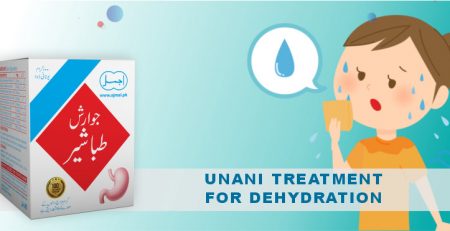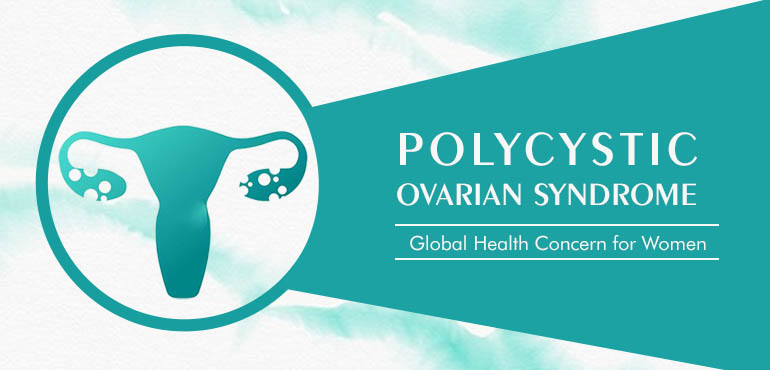Jawarish Tabashir acts as astringent and dehydration. Especially during the summertime, most of us experience problems like dehydration because of getting insufficient liquid intake. As a result, they experience tiredness, nausea, dry skin, eyes and tongue, sluggishness, dizziness, as well as confusion. Jawarish Tabashir quenches the excessive thirst and eliminates the symptoms of Polydipsia. Other causes of excessive thirst may include eating spicy and salty foods, strenuous exercise, and diarrhea. Jawarish Tabashir helps by providing nourishment to the body and is the best herbal medicine for dehydration.
Additionally, Jawarish Tabashir is also helpful for patients who are experiencing dehydration caused by bilious diarrhea. The main ingredient of Jawarish Tabashir is Malus Domestica, which in particular acts as an anti-proliferative, anti-depressant, anti-inflammatory, and anti-microbial.
Malus Domestica is also a rich source of phytochemicals. It also prevents cancer, cardiovascular disease, obesity, pulmonary dysfunction, asthma, and diabetes. Jawarish Tabashir also has been found to have powerful antioxidant properties that inhibit cancer cell proliferation, decrease lipid oxidation, and lower cholesterol levels.
Main Ingredients
Bambusa Bamboo Druce

Bambusa Bambos is commonly known as “Tabashir”, is found easily in South and East Asia. Bambos contain fresh leaves, and dried fruits belong to the Gramineae family as corn, sugarcane, and grasses. Generally, its entire plant is primarily used in Unani Medicine System for an astringent, laxative, inflammatory conditions, and a diuretic. Its shoots used for the treatment of ulcers and leaves are used to treat leprosy, amenorrhea, dysmenorrhea, eye problems, lumbago, and hemorrhoids. (Kaikini Aakruti A, 2013).
It plays a vital role in strengthening the overall health, including bones, skins, teethes, gums, arterial walls, hair, and nails. (Kaikini Aakruti A, 2013). Fruits are useful in fat metabolism and obesity. (Kaikini Aakruti A, 2013).
Pharmacological Potential
Bambusa Bambos has been proven to have incredible pharmacological potential with extraordinary effectiveness and usage as a traditional Unani medication. Likewise, it is broadly utilized in medicines for its calming, astringent, purgative, and diuretic effects against ulcer against heftiness. Also it is used as an abortifacient. The different substance constituents in this plant are oxalic corrosive, chlorogenic corrosive, ferulic acid, coumeric corrosive, protocatechuic corrosive, vanillinic corrosive, caffeic corrosive, lessening sugars, saps, waxes, hydrogen cyanide (HCN), benzoic corrosive, diferuloylarabinoxylanhexasaccharide, diferuloyl oligosaccharide, (5, 5′- di-(diferul9,9′- dioyl)- [α-L-arabinofuranosyl-(1→3)- O-β-D-xylopyranosyl-9-(1→4)- D-xylopyranose] (taxiphyllin), arginine, cysteine, histidine, isoleucine, leucine, lysine, methionine, phenlyamine, threonine, valine, tyrosine, niacin, riboflavin, thiamine, betain, choline, proteolytic chemicals, nuclease, urease. Pharmacological assessment of different plant pieces has shown cell reinforcement, anthelmintic, diuretic, mitigating, hostile to the ulcer, against diabetic, against bacterial, hostile to fruitfulness, hypothermic, hostile to thyroid enemy of the tumor, and ecbolic practices. (Aakruti Kaikini, 2013).
The young shoots (labong) are genuinely delicate and eaten as a vegetable and atchara.
Therapeutic Use Of Bambusa Bamboo Druce
Anti-Inflammatory/Anti-Ulcer: Study assessed the mitigating impact of a methanol concentrate of leaves of Bambusa arundinacea against carrageenan-actuated and immunologically prompted paw edema and anti-ulcer action. The blend of methanol concentrate and phenylbutazone (NSAID) created a significant calming impact. It might usually help the drawn-out treatment of incessant fiery conditions like rheumatoid joint inflammation with peptic ulcers. (zhu).
Anti-Diabetic/Seeds: The study assessed fluid ethanolic dissolvable concentrates of Bambusa arundinaceae for hostile to diabetic action. Results indicated a factually noteworthy enemy of diabetic work in examination with standard glibenclamide.(zhu).
Antihyperlipidemic/Leaves: A study investigated the antihyperlipidemic effect of a methanolic extract of Bambusa Bambos in Poloxamer-407; results show decreased total cholesterol, triglycerides, LDL-C, VLDL-C, hepatic cholesterol, and hepatic triglycerides with a concomitant increase in serum HDL-cholesterol levels. The most effective dose was 300 mg/kg. (zhu).
Hepatoprotective / Thioacetamide Induced Hepatotoxicity / Antioxidant / Young Shoots: Results showed good antioxidant activity. Treatment with the extract caused a significant increase in cell viability and significantly decreased the elevated biochemical parameters induced by thioacetamide. Histopathology further supported the protective effect. (zhu).
Other Benefits
- Decoction (20 gm for 1 liter of water; 3 cups every day) of stems of young shoots applied remotely for excited joints.
- The decoction of leaves is used to animate period, likewise utilized for intestinal worms.
- A poultice of young shoots used for dislodgement, dehydration of infections from ulcers.
- The decoction of roots utilized for anuria.
- Stems and leaves are used to treat blood sicknesses, biliousness, leucoderma, aggravations, wounds, and heaps.
- Juice of blossom ingrained to ear for ear infection.
- The decoction of delicate shoots utilized as an abortifacient in the first month and the most recent month to initiate work and encourage placental ejection.
- In India, the decoction of leaves utilized for looseness of the bowels. The decoction of shoots with nectar is used for respiratory issues. The leaf decoction is used to invigorate the monthly cycle. Leaves ingested legitimately to fix stomach or intestinal worms. Glue from shoots utilized remotely for cleaning wounds or slimy parasite swarmed bruises. (zhu).
Santalum Album
Sandalwood is a little, slow-developing tree, developing from 4 – 20 meters tall. The plant has a long history of utilization, exceptionally esteemed for its sweet scent, and utilized as a medication, aroma, and incense in the East.
Santalum Album contains some essential minerals potassium, calcium, sodium, phosphorous, chlorine, magnesium, nitrogen, sulfur, nitrate, copper, zinc, and iron. This herb acts as an astringent, antispasmodic, digestive, diuretic, analgesic, dehydration, and antiseptic.
Santalum Album is very powerful in relieving extreme gas. It is also helpful for assuaging loose bowels, useful in gonorrhoea, utilized in mitigating dysuria and cystitis, treatment for excessive sweating, and relieves inflammation of the skin.
Santalum Album is beneficial for diseases like headaches, insomnia, and nervine tension contains α-Santalol, which have anti-cancer properties against skin cancer, leukemia, prostate cancer, and acts as an aphrodisiac and for the treatment of spermatorrhoea.
Rosa Damascene
Rosa Damascene is generally known as Gulab or Gul-e-Surkh in Pakistan and is an active ingredient in Jawarish Tabashir for dysentery treatment. Traditionally this was used to treat abdominal and chest pain, heart strength, menstrual bleeding, digestive problems, dehydration, and constipation. Rosa Damascene is belonged to the Rosacea family, having more than 200 species.
Rosa Damascene chemical properties are Citronellol, geraniol, nerol, phenyl ethyl alcohol, nonadecane, eicosane, heneicosane, tricosane; α-guaiene, geranyl acetate, and eugenol have been reported from different parts of the worlds. (Mahboubi, 2016).
Methanol and fluid concentrates of flower petals demonstrated antiviral movement against HIV disease by focusing on various HIV replicative cycle phases. Combination with other herbs works beneficial for anti-infective and anti-inflammatory, patients with conjunctivitis, dry eye, acute- dacryocystitis, the pterygium, or pinguecula disorders. (Mahboubi, 2016).
Therapeutic Use of Rosa Damascene
The studies confirm that Rosa Damascene has antiviral, antibacterial, anti-cancer, anti-depressant, antioxidant, analgesic, anti-inflammatory, anticonvulsant activities, relaxant as well as hypnotic. Studies show that this plant’s ethanolic and aqueous extracts significantly reduce the number of coughs, useful to improve the cardiovascular system, and anti-diabetic its menthol extract considerably decreases the blood sugar level. Rosa Damascena has antioxidant properties; all parts of the plant fruits, vegetables, seeds, leaves, roots, and barks used for this purpose. (Mohammad Hossein Boskabady, 2011).
Coriandrum Sativum
Coriandrum Sativum is a piece of the Apiaceae family containing 3,700 species, including carrots, celery, and parsley. All parts of the plant are consumable, yet individuals must regularly utilize the new leaves and dried seeds in cooking. It is a good source of antioxidants. Using cilantro to enhance food may urge individuals to use less salt and decrease their sodium admission.
Coriandrum Sativum contains Vitamin A, C, and K, and the traces of folate, potassium, manganese, choline, beta-carotene, beta-cryptoxanthin, lutein, and zeaxanthin. (Ware, 2019).
Coriandrum Sativum for Gastric Problems
Coriandrum Sativum is utilized for assimilation issues, including disturbing the stomach, loss of hunger, hernia, and queasiness, looseness of the bowels, intestinal gas, and liver function. It is also used to treat measles, hemorrhoids, toothaches, worms, and joint agony, just as microbes and parasites bring about diseases. It’s also used to increase breast milk during feeding.
Coriandrum Sativum additionally brings down glucose by enacting specific proteins; it’s full of antioxidants with immune-boosting, anti-cancer, anti-inflammatory, and neuroprotective properties. It’s protected the heart by lowering LDL Cholesterol and increases HDL cholesterol and is found effective against heart diseases and lower blood pressure. The antioxidants in Coriandrum Sativum reduce brain inflammation, improve memory, and reduce anxiety. The vitamins Coriandrum Sativum contains are considered excellent for eyesight, improve vision, and reduce stress. (Panoff, 2019).
Coriandrum Sativum also contains Vitamin A, and K. Vitamin K is good against Alzheimer’s disease, Vitamin A protects from lungs and cavity cancer. Coriandrum Sativum is rich in iron and good for anemia. (TNN, 2017).
Emblica Officinalis
Emblica Officinalis is the Indian Gooseberry otherwise called “Amla”, which is a marvel organic product. All parts of this herb are useful for remedial purposes, particularly, this herb is used for cardiovascular and neurological health. (Regrowz).
Emblica Officinalis is especially utilized for elevated cholesterol, abnormal degrees of cholesterol or blood fats (dyslipidemia), and tenacious acid reflux. Additionally, it is used for sickness and malignant growth; however, there is nothing, however inadequate logical proof to help these employments. (WebMD).
Emblica Officinalis is beneficial for the following health conditions:
- Atherosclerosis
- Diabetes
- Diarrhea
- High blood pressure
- High cholesterol
- Joint pains
- Obesity
Emblica Officinalis is utilized as a cancer prevention agent, immune booster, antipyretic, pain-relieving, cytoprotective, anti-ulcer, anti-inflammatory, antitussives, and gastroprotective. Emblica Officinalis having a stable Memory upgrading property, in bringing down cholesterol level, appropriate in ophthalmic confusion, are evaluated. (R. Jain, 2019).
Emblica Officinalis is utilized for the most part as a cancer prevention agent, immune booster, antipyretic, pain-relieving, cytoprotective, anti-ulcer, anti-inflammatory, antitussives, and gastroprotective. Emblica Officinalis having a stable Memory upgrading property, in bringing down cholesterol level, appropriate in ophthalmic confusion, are evaluated. (R. Jain, 2019).
Emblica Officinalis contains carotene, which has a powerful effect on eye vision and improves eyesight, near-sightedness, and cataracts. It also helps to reduce cough, tuberculosis, throat infections, and flu. Emblica Officinalis is rich in iron, acts as a blood purifier, contains calcium, which is good for teeth, bones, and hairs, has antioxidant properties, and removes wrinkles, dark circles, and save the body from radiations. Improve nerve health by improving blood circulation to the brain, improving memory and attention power, and reducing the chances of dementia and Alzheimer’s. (Chauhan, 2019).
Myrtus Communis
Communis is a plant. The leaves and branches are used to make the medication. Individuals take Myrtus for lung diseases, including bronchitis, cough, and tuberculosis. Generally, the Myrtus Communis is prescribed for bladder conditions.
Myrtus Communis has been used to treat a few infections like gastric ulcers, diarrhea, dysentery, cancer, stiffness, bleeding, profound sinuses, leucorrhoea, hemorrhoid irritation, dyspepsia, nervousness, sleep deprivation, diabetes, hypertension, aspiratory scatters, and skin illnesses. Furthermore, ethnopharmacological exams uncovered that the plant is blessed with broad pharmacological activities, including anti-microbial, anti-diarrheal, anti-diabetic, antispasmodic, vasodilator, anti-ulcer, cell reinforcement, anti-cancer, anxiolytic, narcotic trancelike, and mitigating exercises, among others. The plant has been known to contain phenolic acids, tannins, flavonoids, glycosides, and terpenes. (Mekonnen Sisay, 2017).
Role In Breast Cancer
Myrtus Communis has been linked to a reduction in breast and prostate cancer because it includes a higher level of catechin, quercetin, myricetin, and antioxidants. (HealthBenefitsTimes).
Myrtus Communis found very beneficial for respiratory functions like bronchitis and asthma, it allows oxygen to pass through the body, and clam the body. Furthermore, this herb also helps stimulate urination by eliminating excess toxins, salts, fluids, and even fats and helping to regulate kidney functions. (Staughton, 2020).




